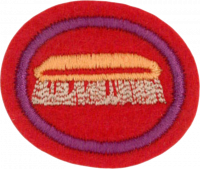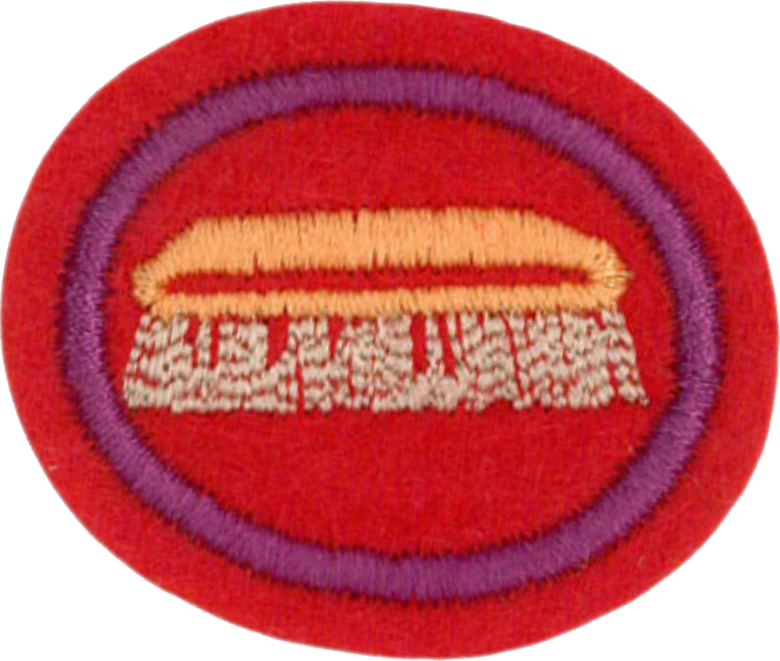Especialidades JA/Empapelado/Respuestas
From Pathfinder Wiki
< AY Honors | PaperhangingAY Honors/Paperhanging/Answer Key/es /
1
Decir cómo elegir correctamente los diseños y combinaciones de papel tapiz para los siguientes lugares:
1a
Sala
- Think about how this room is used. For some homes, this is a formal guest area and used to visit with your guests. Others may emphasize the living part of this room, and the family may actually use it for daily living.
1b
Comedor
- Most likely this room will be where you take your meals. So, the theme or pattern should be in harmony.
1c
Dormitorio
- Ah, this would be where you bed down for the night, although, some of you might spend a lot of time cooped up here to stay away from icky siblings.
1d
Cuarto de baño
- As mentioned earlier, wallpaper may not be happy with the extra moisture in the bathroom.
1e
Cocina
- For some homes, this may be the center of all activity.
1f
La sala de juegos de los niños
- Depending on the age of the children, the wallpaper selection may be different.
1g
Templo
- This is where we worship God. So, think of something that would be in line with the use.
2
Anotar en un cuaderno las respuestas de los requisitos anteriores y en el requisito #3 incluir su diseño, el color y el material elegido para cada habitación.
- Well, hopefully you have been diligent and have written into a notebook your answers from Requirement #1 above.
3
Mostrar la adecuada preparación de la pared para el empapelado.
- Wallpaper requires proper surface preparation before installing/hanging. Wallpaper is not suitable for all areas. For example, in a bathroom, wallpaper may deteriorate rapidly due to the steam from hot baths and/or the moisture in the bathroom. Proper preparation includes repairing defects in the drywall (or plaster), the removal of loose material, or, removing old adhesives. You should also remove light fixtures, towel hangers, wall plates, etc., so as to create a better surface for your work. Don't forget to prime the wall.
4
Explicar cómo se sostiene el papel tapiz. Describir por lo menos dos métodos. Utilizar un método para empapelar al menos dos paredes de una casa, tal como dormitorios, salas, etc. Mostrar concordanciade patrón adecuadamente.
- Start in a inconspicuous corner. Since it would be difficult to match the pattern once you come back around the room, you want this to be in the most un-noticeable spot.
- From this starting spot, measure out the width of the wallpaper on the wall from this corner. Come back a 1/4-inch and draw a plumb line on the wall. This plumb line will help line up your first sheet. Also, draw a second plumb line for your next sheet.
- Roll out your wallpaper and cut the first few strips to length. If you have a pattern to match (edge to edge), make sure that the strips are long enough so that the wall is covered (top to bottom) when the pattern matches.
- Roll the strips in water, making sure to include all the edges. Fold the top 1/3 of the wallpaper back onto itself (adhesive sides facing each other. Fold the bottom in a similar fashion, overlapping the top slightly. This is called 'booking' the paper, and allows the glue to activate. Sometimes, I use an 'adhesive activator' instead, and sometimes I use wallpaper adhesive. Prepare only a few strips so that the adhesive does not dry out before you are ready to 'hang' the wallpaper.
- Use the first pencil line as a guide to hang your first strip of wallpaper. Use a squeegee to smooth out the wallpaper and ensure a good attachment to the wall. Cut off the excess wallpaper on the top and the bottom using a sharp knife and a straight edge. You are now ready for the second piece.
- When hanging wallpaper, I've overlapped the seams as well as butted the seams, and right now I'm reading that the seams should not overlap. When you hang your second, and subsequent pieces, make sure the pattern matches the previous piece. Use a seam roller to work the seams flat.
- After turning a corner, cut off the wallpaper 1/4 inch after the corner and start a new strip. This will prevent problems like the wallpaper from pulling away at the corner (it shrinks a little after drying).
- You're going to learn a new routine - cut, wet, book, hang, smooth, trim.
- Enjoy!


